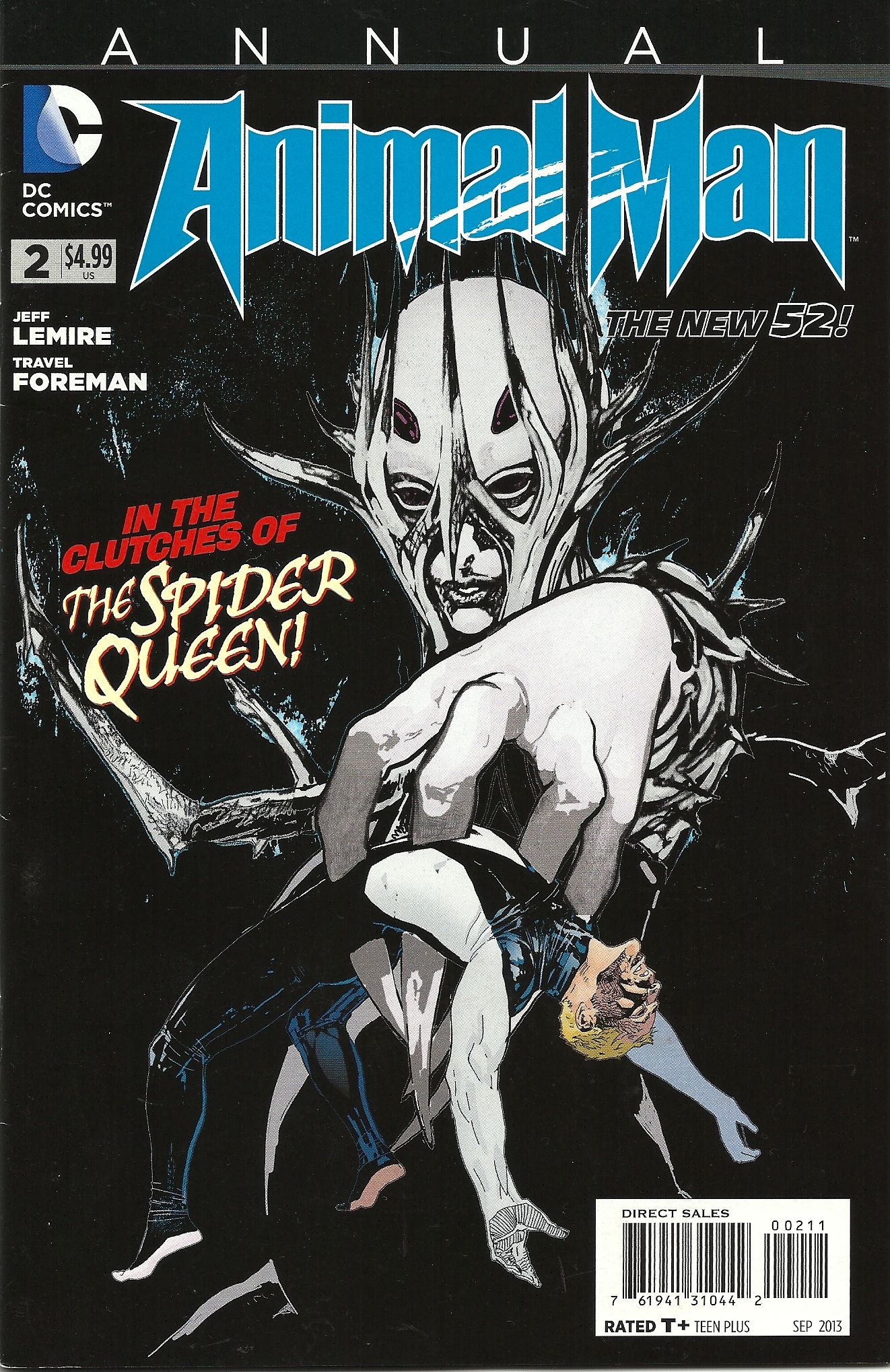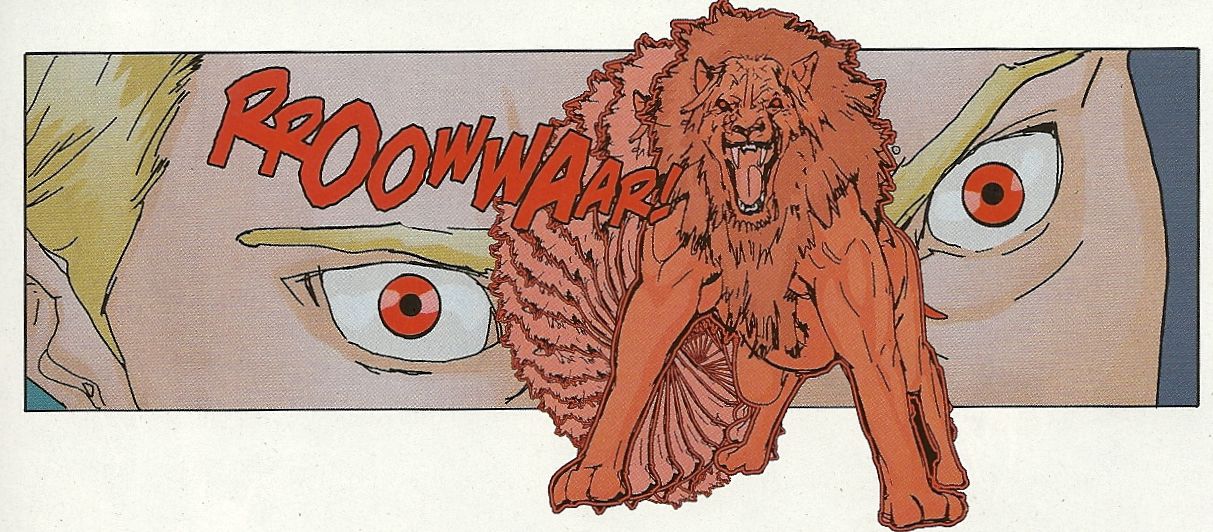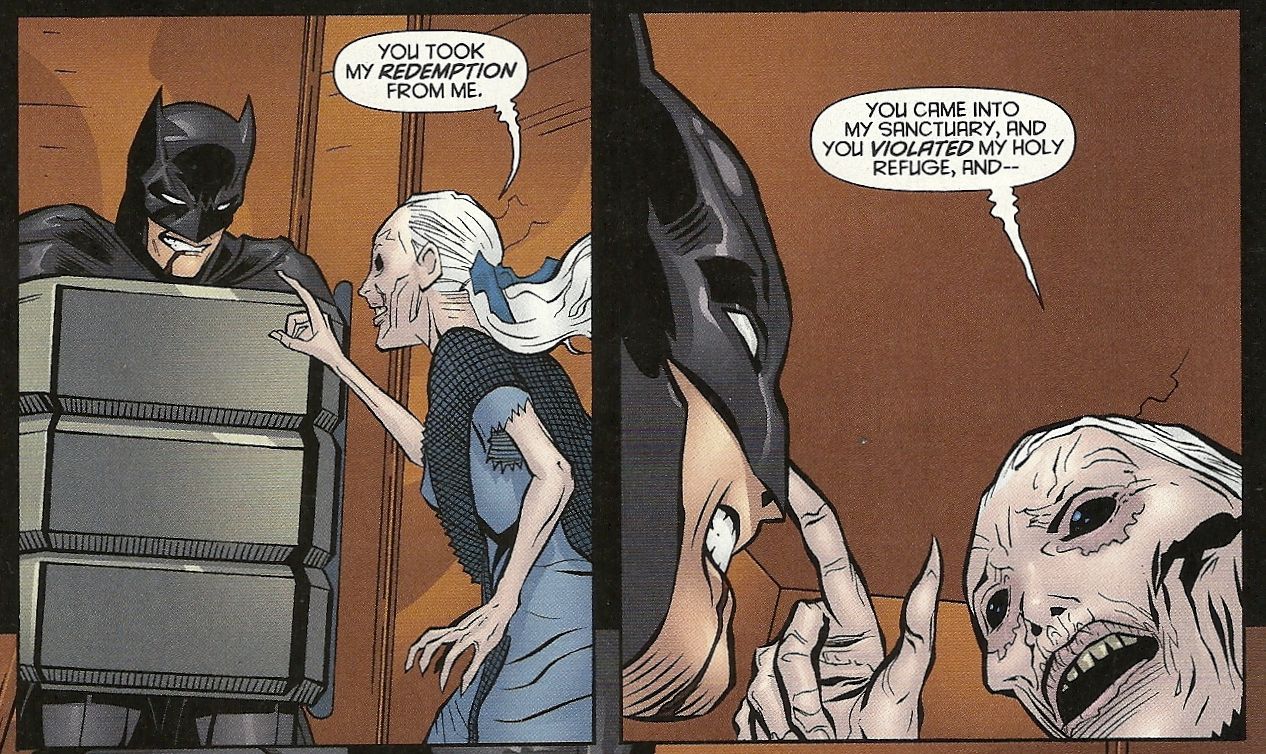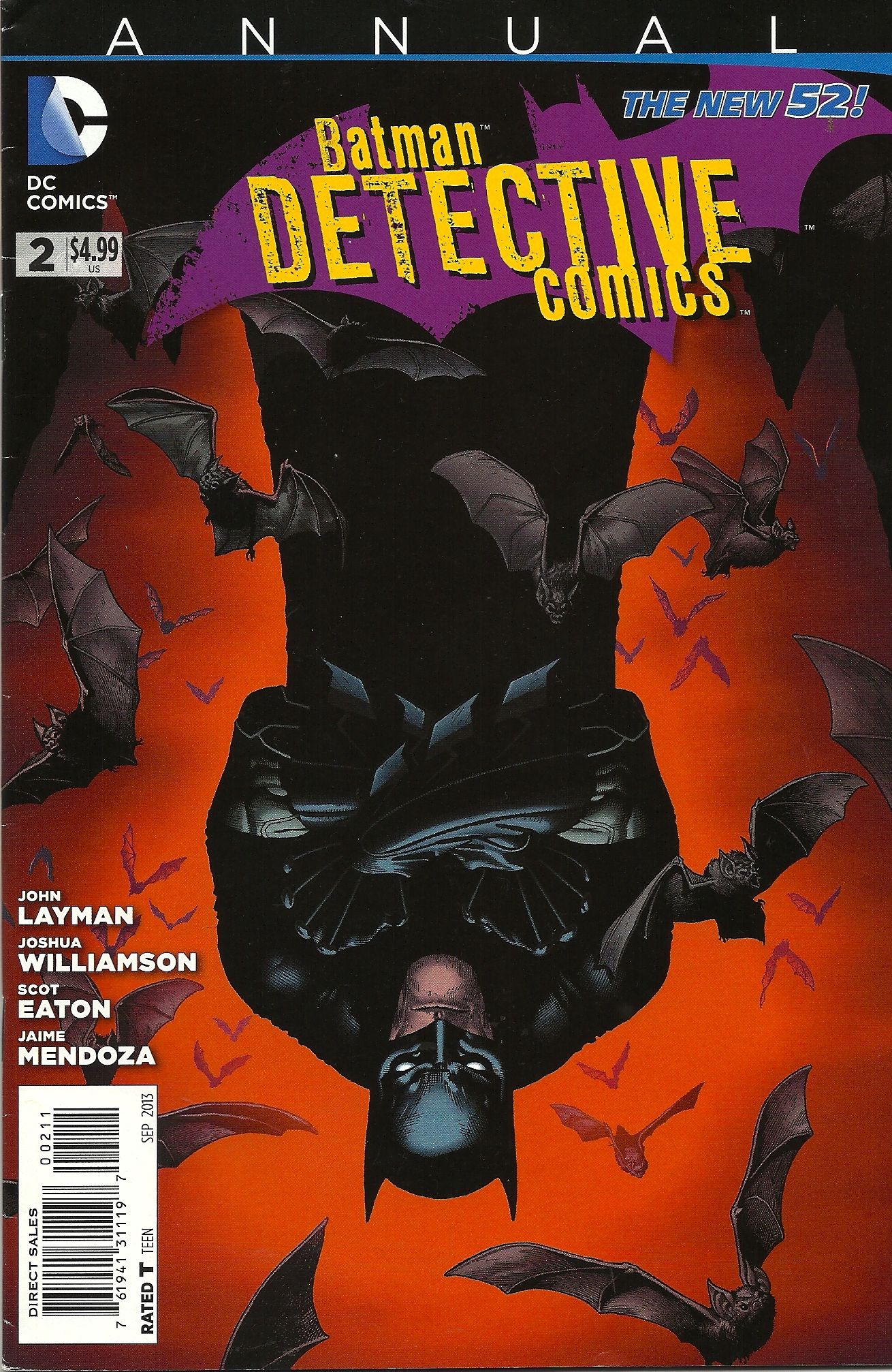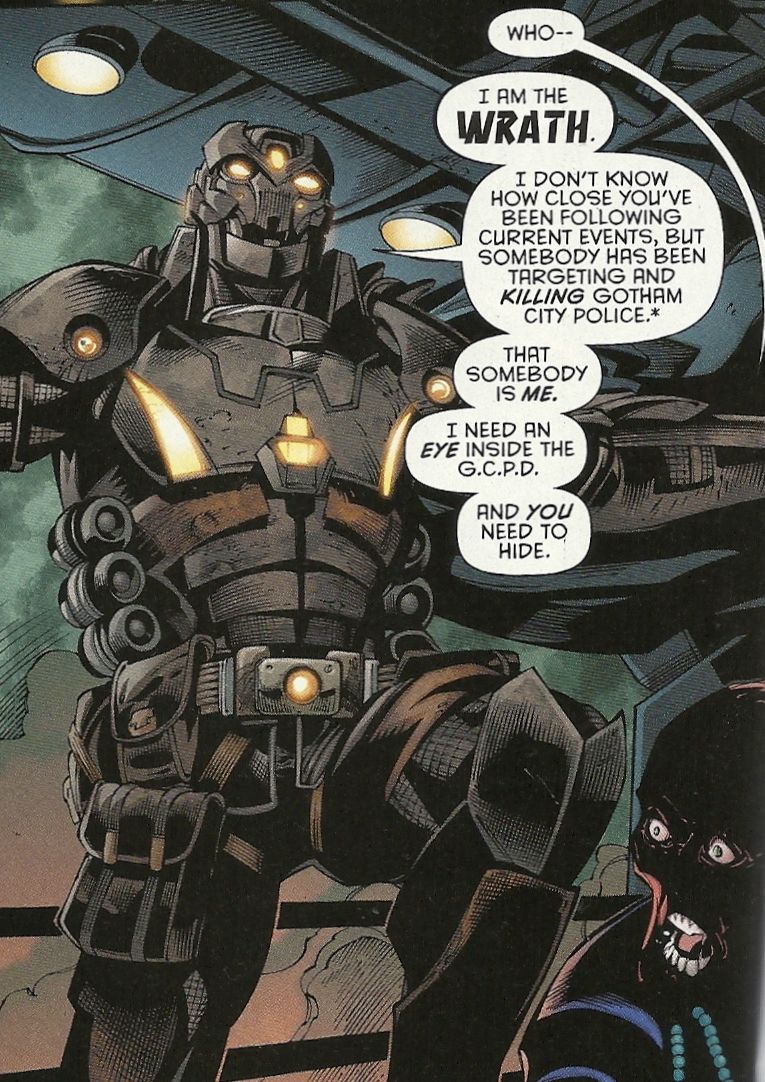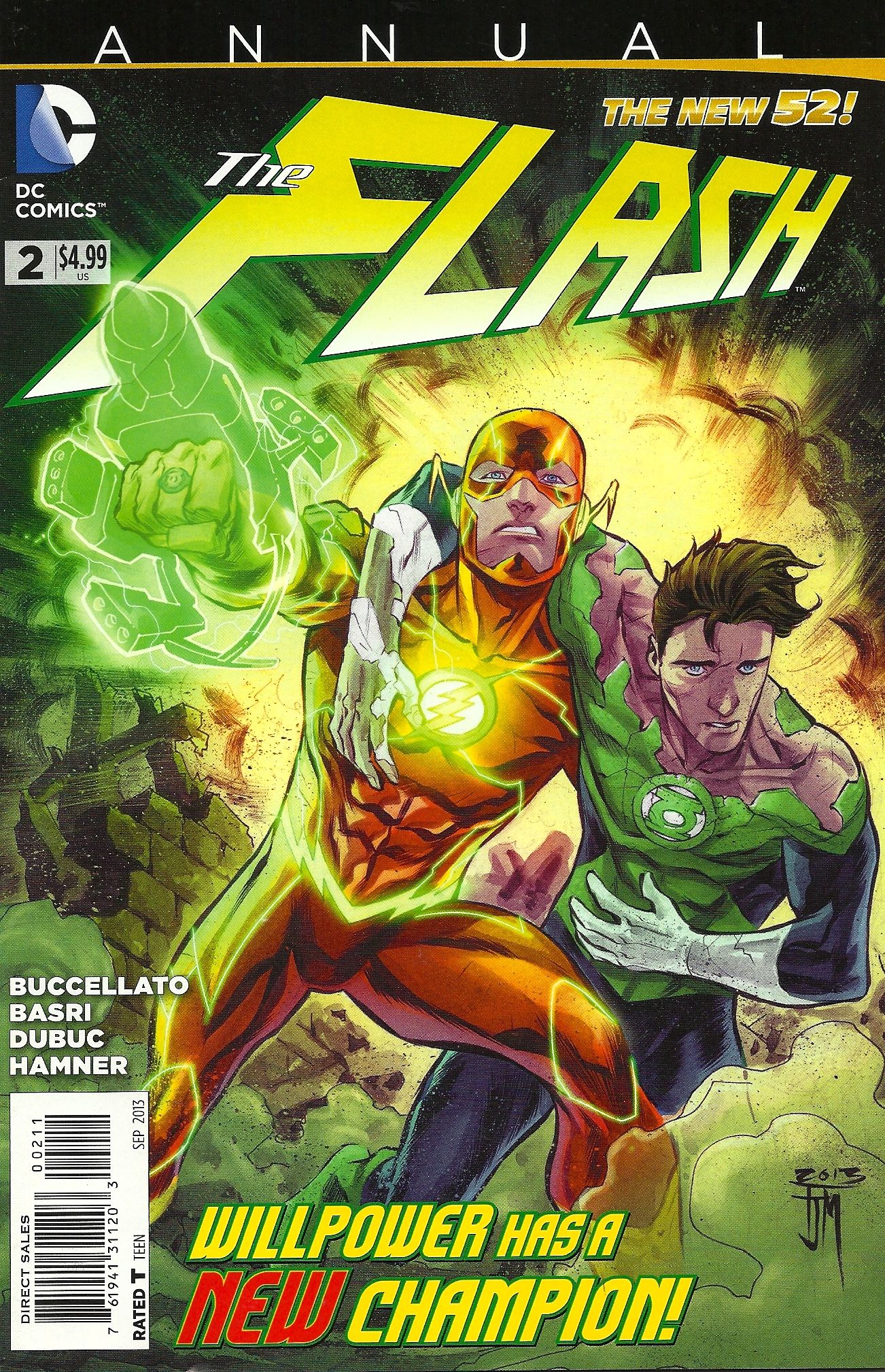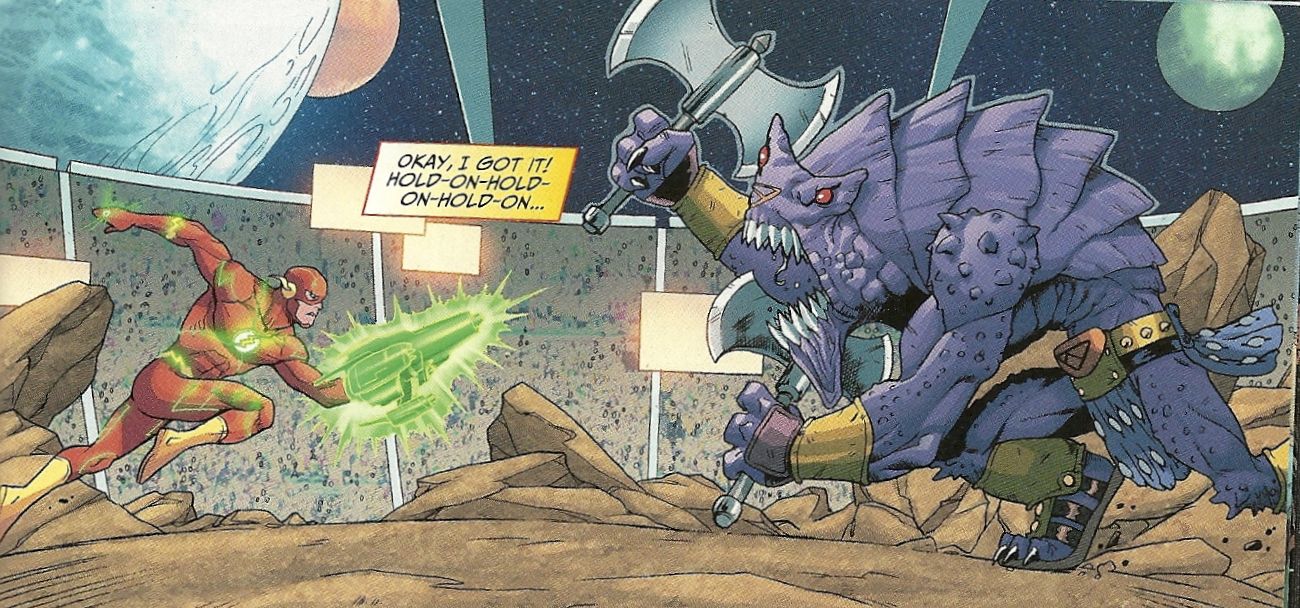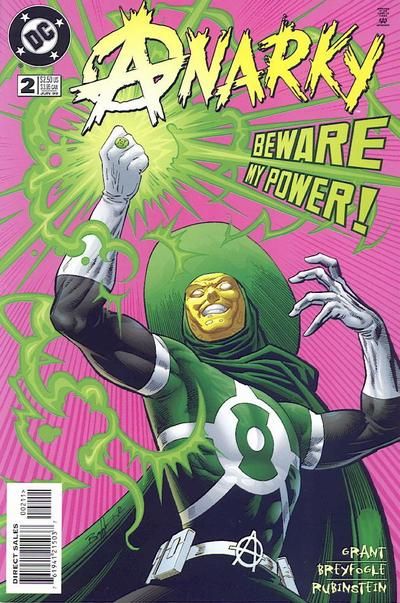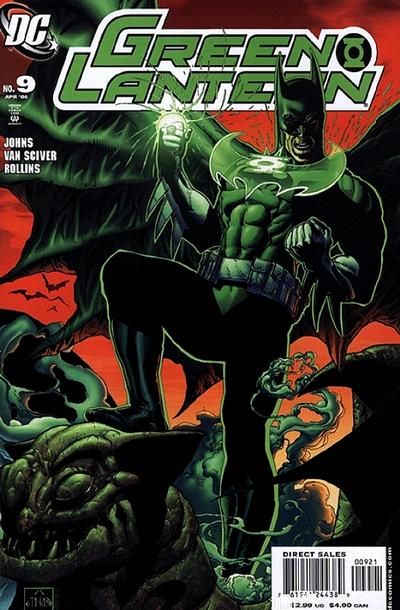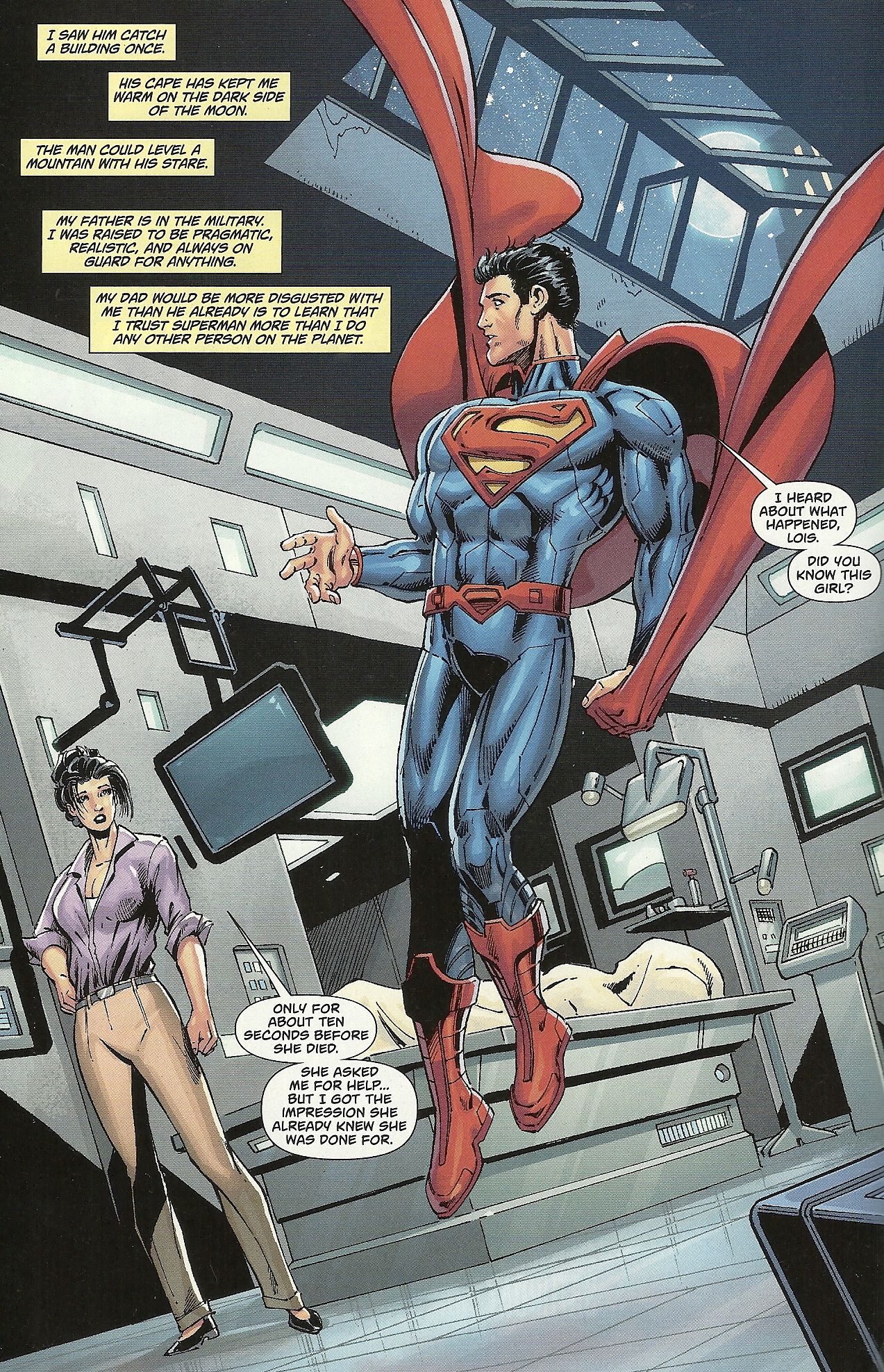The comic book annual has, in recent years, become an endangered species. Once an oversized, extra-length dose of the characters and concepts a reader could count on appearing once a year (or, you know, annually), the changing funny-book landscape has made them a less appealing proposition.
The rise of the graphic novel and trade paperback collections made "novel-length" adventures appearing in actual, off-the-rack comic books somewhat obsolete. The rising price of comics helped make annuals seem less practical; if a 20- or 22-page comic costs $2.99 or $3.99, a 48- or 56- or 64-page one would be prohibitively expensive. And with the shrunken market, it doesn't make sense for a publisher to release an additional, extra-long issue of almost every title in its line.
In recent years then, the annual has become something closer to a one-shot, with DC Comics in particular using the term to refer to a slightly longer than usual issue of a comic, and as a way of spotlighting a storyline or story event as something "important." Annuals were no longer line-wide, they didn't necessarily get published every year, and they weren't always standalone.
With the New 52, that's changed a bit — if nothing else, some of the line's books are publishing annuals annually now. This summer the publisher released five new annuals, each by the regular writer of the title, and each attached to one of the publisher's more popular series. They differ slightly in format, and aren't as big and epic as they used to be, but some of them certainly qualify as bigger doses of what readers might like about the regular series they're attached to.
So let's take a closer look at DC's summer annuals, shall we?
Animal Man Annual #2: Writer Jeff Lemire certainly deserves some credit for his work on Animal Man. Not only has he stayed on the title for about two years now, despite his steadily rising star in the constellation of DC writers, he also did his homework on Animal Man's past, plucking a character from very late in the previous,1988-1995 volume for use here. That would be Anansa, the Spider Queen, from Animal Man #81, during Jerry Prosser's run on the then-Vertigo title.
In this full-length, 38-page story by Lemire and former Animal Man interior artist Travel Foreman, Buddy is hitting rock bottom after the death of his son Cliff. He's in the process of attacking the magazine rack at a convenience store when he sees something that reminds him of an adventure that prominently featured Cliff, and a way he might be able to find some temporary solace that's not any less healthy than what he was trying previously: drinking cans of beer in bed.
On the eve of his daughter Maxine's birth, A-Man is trying to balance being a celebrity superhero and a family man, and he's managing it pretty well, but upon picking his son up from school, the police flag him down to investigate a city block covered in giant spider webs. He follows their trail to the seemingly alien Spider Queen, who has taken a bunch of human captives to lay her eggs in, her giant space spiders feeding on the bodies and dreams of her victims. Previously she just fed them on animals, but she's trying out human beings now.
Buddy talks her down remarkably easily, and without much in the way of deliberation when it comes to the difference of alien space spiders feasting on human beings versus animals; this Animal Man doesn't seem as philosophical as the Vertigo version, nor as concerned about the welfare of the prey species he communicates with as, say, Taroza in the really rather remarkable manga series Animal Land by Makoto Raiku.
Foreman's art is a pretty acquired taste, and while the storytelling is generally clear, the artwork looks heavily computer-derived and over-referenced, particularly in the opening few pages, where the panels are tight and small and the artwork looks mechanically shrunken. Other places, computer images are used a little too obviously and gratuitously, at least for my comfort, giving the art an overly slick, so-close-to-real-it-draws-attention-to-its-unreality aspect; there are a couple of scenes where the comic seems to break down in the uncanny valley, basically.
Foreman handles the freaky stuff well, however, and although there's a distinct lack of place or background in the bulk of the story, he sells the alien horror.
There's a weird effect used to indicate Animal Man's accessing of an animal power, in which we see the animal in red, spiraling toward the reader. It looks like a rather cheesy, 1970s television special effect, which, if nothing else, reminded me that this is probably a better and easier superhero to adapt into a television show than The Flash or Wonder Woman.
Batman Annual #2: Regular Batman writer Scott Snyder collaborates with newcomer Marguerite Bennett (who gets a "written by" credit and a "story by" co-credit with Snyder) on a full-length, 37-page story penciled by Wes Craig and inked by a half-dozen different artists (one of whom is Craig himself).
As you can see on Jock's cover, which seems to feature Batman peeking into an alley and reading the contents of the issue listed like graffiti on the wall, one selling point they're going for is a tie-in to the ongoing "Zero Year" plotline in Batman, but that's actually pretty minor, a mention more so than anything else (a character flashes back to a page when a pre-Batman Bruce Wayne broke into Arkham Asylum to rifle through patient files, basically).
As for what Snyder and Bennett cooked up, Batman has been asked by Dr. Arkham to be imprisoned in Arkham and then try and break out in order to test the asylum's new, inescapable security. It's the same night than an idealistic new orderly starts his new job at there, and he takes a special interest in the asylum's first inmate "The Anchoress," a word with more than one meaning here (Bennett has some fun with language and meaning, not only in that character's code name, but also with the word "asylum" and ideas regarding cages, imprisonment, safety, punishment and medical care).
Through the new orderly character, Bennet articulates a point of view rarely brought up in Batman comics, and that's the sort of Victorian attitude toward mental illness that prevails in Gotham City, something that requires a suspension of disbelief if you want to read Batman comics (because in the real world, The Joker would have been executed after his first killing spree, and most of these inmates would either be executed or treated with medication, rather than stored in a big Gothic toy box like action figures awaiting their turn to bedevil the Batman).
There's even a scene where the orderly shouts, "Don't, Batman! ... Can't you see she's sick?" as if Batman were about to clock the Anchoress, a frail little old lady with superpowers, designed to resemble a Ted Naifeh Courtney Crumrin character (claw-like fingers, pure black eyeballs, skeletal face and figure).
It's a promising debut for the writer and a nice use of the format to deliver an extra-long story. Craig's art is simple and open enough to bear the various inkers well, and despite all the different pens on the pages, it's remarkably consistent in look and feel.
Detective Comics Annual #2: Regular TEC writer John Layman and co-writer Joshua Williamson build a story around a Batman villain of relatively recent vintage: Jane Doe, one of several new characters created by Dan Slott and Ryan Sook in their 2003 miniseries Arkham Asylum: Living Hell (a series that also introduced Humpty Dumpty, Great White Shark and a few other new rogues).
Her schtick is that she is an unparalleled mimic and identity thief who "becomes" her victims ... after killing and skinning them and wearing their faces. This is apparently her introduction into the New 52-iverse, in a story that also features a brief appearance by another character Layman is recycling, Mike Barr and Michael Golden's The Wrath, whose sorta-silly costume has been redesigned so thoroughly and so generically that he might as well be wearing a T shirt and jeans.
This new telling of the Batman vs. Wrath story is ongoing in TEC right now, and his recruitment of Jane Doe as a mole inside the police department is meant to tie this annual into that story. The book-to-book continuity here is remarkably tight, with the events of other Batman titles referenced in dialogue, cameos and footnotes, although the acknowledgement can come as something of a detriment: For example, Doe kidnaps a nameless member of the Gotham City Police Department, ties him to a chair and then takes over his identity; in the pages of The Dark Knight, Clayface is busy doing the exact same thing with a different member of the GCPD.
The book contains three stories by Layman and WIlliamson featuring the same characters and events, with a main story starring Batman drawn by Scot Eaton and Jaime Mendoza, and then two shorter epilogue-like pieces featuring supporting characters that take place, in parts, simultaneously to the main story (one is drawn by Szymon Kudranski, the other by Derlis Santacruz and Rob Hunter). The idea was apparently to break up the main story so that multiple artists with vastly different styles could be deployed strategically, but the result is a relatively short, 25-page "feature" followed by two six-page stories that read like outtakes or deleted scenes from a previous cut of a movie.
I appreciate the effort to tell a visually consistent story, but the attempt sacrifices the main selling point of the annual format — their promise of bigger, longer stories. The art is fine, with Eaton and Mendoza's smooth, muscular art the strongest, and the script adequate despite the format decisions, although it feels somewhat wrong to have writers using other people's characters like this. Yes, that's the nature of corporate super-comics and something readers of them are quite used to, but I think there's a distinction to be made between these creators using Bob Kane and company's Batman and Commissioner Gordon (who scores of others have used in various media over the space of seven decades), and using The Wrath (who only a handful of other creators have) or Jane Doe, who only one other creative team besides her creators have ever used).
Flash Annual #2: Remember in Geoff Johns and Jim Lee's Justice League, the first title of the New 52, when Green Lantern Hal Jordan and Flash Barry Allen intimated that they had previously teamed-up and revealed their secret identities to one another in an off-panel adventure?
Well, Flash colorist and co-writer Brian Buccellato is joined by artist Sami Basri to tell that story in the first 28 pages of this book. Long ago, the two were both working the same case -- child-nappings by space aliens, which happened to fall into both of their jurisdictions as a cop and a space cop — and they managed to save all the kids only by GL making a deal that comes back to bite them on their Spandex-clad butts in the present day.
It's a pretty typical, even generic story, with bantering leads who have things in common as well as differences that they must learn to put aside to save the day. Saving the day here includes gladiatorial combat among aliens warriors on War World (or a War World; I lose track of things like that between reboots). Basri's clean, smooth, bright art (here colored by Stellar Labs) is the selling point, with some panels taking on the look of animation cells. The big superhero moment is the one teased on Francis Manapul's cover, with The Flash using GL's ring.
Sadly, The Flash doesn't get a costume change, or even a color upgrade. He just looks like this:
For shame, guys. The best part of other characters temporarily getting their hands on Lantern rings is, of course, the costume update that accompanies them:
Have you learned nothing from Blackest Night and all that "War of Light" business leading up to it ...?
There's an all-around stronger, but maybe less exciting, 10-page back-up story by writer Nicole Dubuc and drawn by Cully Hamner. (Hey, that's the second writer with a female name involved in this year's batch of annuals, right? Perhaps DC heard all the chatter about the lack of women involved with the line-wide relaunch a few years ago). It's a fairly typical hero-doing-good-deeds-and-occasionally-failing-but-always-inspiring-others sort of story, focusing on the outcomes of The Flash's good deeds, which, given his super-speed and ability to be almost everywhere at once, can be as small as vibrating through the glass of a vending machine to retrieve a stuck snack.
Hamner's thick, chunky lines, particularly as applied to shading, is always a treat, and when coupled-with his use of speedlines make for some great speed effects — The Flash running behind and between the tiers of panels on the opening page is particularly nice.
Superman Annual #2: This annual is a bit more like those DC has been publishing in the recent past — an oversized issue either kicking off or featuring the culmination of a storyline running in the regular books (here, it’s the former).
A 32-page story by regular Superman writer Scott Lobdell titled “The Last Byline,” the story ties back to the events of Grant Morrison and company’s first story arc in Action Comics, in which Brainiac attempted to city-nap Metropolis, as narrator and protagonist Lois Lane tries to track down whatever became of 20 missing persons from around the time of those fantastic events (and are suffering from bizarre after-effects)
“My name is Lois Lane,” Lobdell opens with, “I’ve just been murdered”, while the art team of Dan Jurgens and Norm Rapmund present an image of Lois in a party dress, lying on the cement, covered in shards of broken glass.
From there we flash back to her investigation — which involves people with big, green heads and psionic powers — and follow her back to the point where she was murdered. (This might just be me, but I don’t think she’s actually dead; for one thing, how could she tell us she was dead if she was really dead?)
Lobdell’s story piggybacks somewhat uncomfortably on Morrison’s, assigning other actions and motivations to Brainiac that weren’t there originally, but it’s a decent Lois Lane investigative thriller, with brief appearances by Clark Kent and Superman.
It’s nice to see Jurgens, an artist who defined the look of Superman for many readers, given the sheer number of pages of Superman comics the guy has drawn in the last 20 years or so, drawing Superman again. Despite the changes in design details, like Lois’ hair color or Superman’s much-commented-upon new costume, the characters look so much like “themselves” — right down to cameos by Luthor, Perry White and Jimmy Olsen — that the New 52 Superman comics seem comfortable and familiar, despite some radically different surface changes that some readers are no doubt still getting used to.
Lobdell takes advantage of the greater space allotment to stretch out what might otherwise just be a one-issue story, giving more attention to the ins and outs of Lois’ investigation, and allowing Jurgens for plenty of splash pages or simply layouts of big panels, like two consecutive pages with two panels each, or a page of just two big vertical panels followed by a five-tier, “widescreen” layout.
As nice as it is to see Jurgens, it’s nicer still to see so much of him. The storyline continues into both Superman books and is branded as “Psi War,” so if you want to find out whether Lois Lane is really dead forever, that’s where you’ll have to look.
It’s followed by a rather random-feeling six-page back-up, part four of “Eradication,” featuring Superman’s parents on Krypton, by Frank Hanna and Tom Derenick. There’s no indication where it started, but it apparently ends in Action Comics #23.


